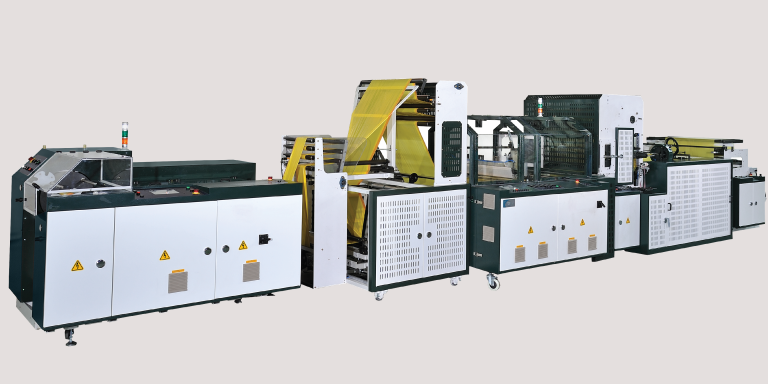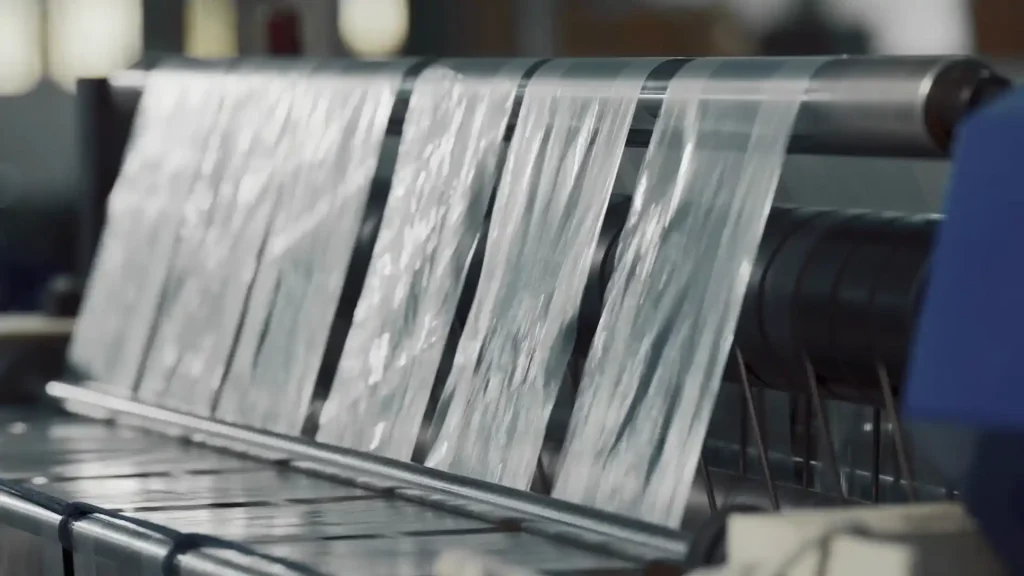Plastic: Guilty or Misunderstood? The Truth Behind 10 Myths (Part 1)
In today’s environmental debate, plastic is often singled out as one of the main culprits of pollution and ecological degradation. However, many of the widely shared claims lack solid scientific evidence. As a distributor of machinery and supplies for plastic manufacturing, AMK Plastics (Miami, Florida) understands how important it is to separate myths from facts. Manufacturers, end consumers, and distributors alike are affected by these beliefs, and understanding the truth can help them make more informed and sustainable decisions.
Below, we address 10 common myths about plastics and what science actually says. In this first part, we cover five myths related to sustainability and plastic packaging, providing comparative data and technical context that may surprise you.


Bag Making Machines - Innovation and Efficiency
Myth 1: Other materials are always more eco-friendly than plastic
It is commonly believed that materials like glass, paper, or metal are always more sustainable than plastic. The truth is that this is not the case in every scenario. For example, PET (polyethylene terephthalate) has significant environmental advantages over alternatives like glass:
Lower energy use and emissions: Producing PET requires much less energy than producing glass. Additionally, due to its lighter weight, transporting PET generates far fewer CO₂ emissions.
Highly recyclable: PET is a highly recyclable plastic; high percentages of recycled content can be incorporated into new PET containers, significantly reducing its environmental footprint.
Limited glass recycling: By contrast, glass bottles reach only about a 43% recycling rate on average, meaning that more than half end up as waste.
In short, alternatives like glass or paper are not always “greener” than plastic. It all depends on the context and a complete life cycle assessment of each material.
Bag Making Machines – Innovation and Efficiency
Myth 2: Banning plastic packaging is the best solution to pollution
At first glance, eliminating plastic packaging might seem like the solution to waste-related pollution. In reality, the main problem is not plastic itself but rather how waste is managed after use. Properly designed and utilized plastic packaging offers key benefits:
Protection and hygiene: Plastic packaging ensures protection, hygiene, and safety—particularly in critical sectors such as food, beverages, and pharmaceuticals—helping extend the shelf life of products.
Efficiency and low footprint: Well-designed plastic packaging uses less material than many alternatives and leaves a smaller carbon footprint due to its light weight and production efficiency.
On the other hand, replacing or banning plastics without technical criteria can have counterproductive consequences:
Increased food waste due to shorter shelf life and inadequate protection.
Reduced protection for sensitive products, compromising their integrity and quality.
Use of alternative packaging with higher environmental impact, as heavier or bulkier substitutes increase emissions in production and transportation.
In short, plastic packaging is not the enemy when properly managed; in fact, it is essential to preserving products and preventing waste. The key lies in improving design and recycling, rather than banning it indiscriminately.
Bag Making Machines – Innovation and Efficiency
Myth 3: Reducing packaging is always better for the environment
Another common myth is that minimizing packaging always reduces environmental impact. The reality is more complex: if the packaging does not adequately protect the product, damage or spoilage may occur—generating waste. And product waste (especially food) has a greater environmental cost than producing the packaging itself. Here are the facts:
In most cases, packaging accounts for only 5–10% of a product’s total carbon footprint.
If that product is wasted due to poor protection, the emissions generated can be up to five times higher than those produced by the packaging.
Therefore, a truly sustainable strategy is not simply to use less packaging, but to design optimal packaging—that is, packaging that uses the least material possible while maintaining freshness, quality, and logistical efficiency. By preventing product waste (such as food spoilage), we also avoid significantly more CO₂ emissions than we save by slightly reducing packaging material.
Bag Making Machines – Innovation and Efficiency

Myth 4: Most packaging waste is plastic
Plastic is often pointed out as the primary component of packaging waste, but data shows otherwise. In the European Union, for example, the distribution of packaging waste by material is:
Paper and cardboard: ~40% of total packaging waste (the largest share)
Plastic: ~19% of total
Glass: ~18.5% of total
Wood: ~17.1% of total
Metal: ~5% of total
As we can see, plastic accounts for roughly one-fifth of packaging waste—a similar share to glass and lower than paper/cardboard. In other words, plastic is neither the sole nor the main culprit in packaging waste generation, despite being frequently portrayed as such. The focus should be on improving the management of all materials rather than demonizing only plastic.
Blow Molding Machines, blow molding market, blow molding applications, plastic containers, automotive industry, toy industry, plastic furniture, medical sector, plastics business opportunities.
Myth 5: Plastic is a major driver of global warming
In public discourse, plastic (especially single-use packaging) is often blamed for contributing significantly to climate change. However, the carbon footprint attributable to plastics is minimal compared to other human activities. Consider these comparisons:
Annual per capita emissions (EU): ~7.4 metric tons of CO₂ per person
Emissions from plastic packaging use: ~0.5% of that footprint (around 0.037 metric tons per person annually)
Round-trip flight Mexico City–Tijuana: generates about 1.2 metric tons of CO₂ per passenger—equivalent to using plastic packaging for 11 years.
In context, the climate impact of the plastics we use is quite small. Transportation, energy generation, agriculture, and even meat production have a far greater greenhouse gas impact. This does not mean that plastic production should not be made more efficient, but focusing solely on “eliminating plastic” would have little effect in the fight against global warming compared to actions like improving transportation systems or the energy matrix.
In the second part of this article, we will continue to debunk more plastic-related myths, including topics such as recycling, plant-based materials, microplastics, and the safety of recycled plastics. Don’t miss it!
blow molding machines for business, blow molding investment, blow molding advantages, plastics industry growth, plastics manufacturing profitability, blow molding machine distributor, plastics machinery supplier

